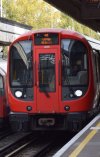Which is, presumably, why "V" ratgher than "W" was used for inter-regional trains destined for the Western Region?
Possibly.
However, IIRC back in the days of Trains Illustrated / Modern Railways mags publishing *real* gen, it was the LMR's train describers - of a very different type in the Piccadilly, Sandbach, etc era - that imposed V not W. But then again an LM press release would have been promoting LM issues not WR ones. Also, read elsewhere, potential in verbal messages to confuse "U" with "double U" (phonetic alphabet notwithstanding - remember this is late 1950s - things are enforced somewhat more rigourously these days) so avoid W. Who knows, it is 60-70 years ago since all this stuff came in and that gives about 50 years for urban myths and legends to over write facts.
I found the WR list in my notes of useless gen - it was not I Q R U W Y - in an IRSE paper dated 02\03\1960. Those were also the days when Learned Society papers could produce real gen like that as opposed to todays media bytes and censored information clouded by commercial confidentiality. Speculating, 20 letters + 10 numbers = 30 characters which in the days of relay needs a 5 relay set (32 states) and allows for a null state and a cleardown - but I have no knowledge if that was how it was done for site to site transmission; exceeding 20 letters would exceed 32 states exceeding 5 relays .... if that were the transmission mechanism.
Digressing on the digression, there was an amusing joke reason why WR was V not W in headcodes. The Western bought German diesel hydraulic technology => "Der
Vestern" Region". A BR SR S&T engineer told me that one: Ken Howard, who was the 1H80, 1H81, etc annual headcode book compiler.
Better get back to LU stuff else a moderator will be excommunicating me.

